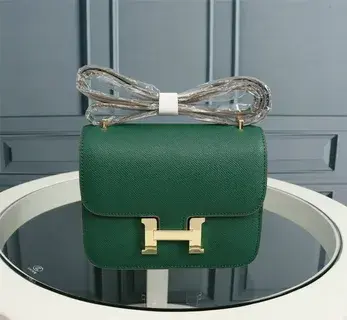Timeless Appeal: Exploring the Allure and Controversy of Hermes Replica Bags
- Maintenance indubai
- Jun 12
- 4 min read

Introduction
Hermès is a name that commands reverence in the world of luxury fashion. Known for its craftsmanship, exclusivity, and staggering price tags, Hermès bags especially the iconic Birkin and Kelly are more than accessories; they are status symbols. Yet, as demand surges and supply remains deliberately scarce, a thriving parallel market of Hermès replica bags has emerged. These replicas range from low-cost knockoffs to high quality dupes that can fool even seasoned collectors. In this article, we delve into the world of hermes replica bags, examining why they are so popular, the ethical and legal implications of buying them, and how they are changing the landscape of luxury consumption.
The Magnetism of the Hermès Brand
Hermès, founded in 1837 in Paris, started as a harness workshop before evolving into one of the most prestigious fashion houses in the world. Its transition from equestrian gear to high-end fashion is a testament to the brand’s commitment to heritage and craftsmanship. Hermès bags, particularly the Birkin and Kelly models, are made by hand, often taking over 20 hours to produce. Each bag is crafted from the finest leathers and materials, and this attention to detail justifies, in part, the bags' astronomical prices—often ranging from $10,000 to over $150,000.
Part of the allure also comes from Hermès' marketing strategy, which is centered on scarcity. The company deliberately limits production and distribution, ensuring that only a select few can obtain a new bag from an official Hermès boutique. This strategy enhances the sense of exclusivity and prestige that accompanies the ownership of an authentic Hermès bag.
Why Replicas Are So Popular
The high cost and limited availability of Hermès bags naturally give rise to an alternative market: replicas. While some consumers seek affordable fashion inspired by luxury aesthetics, others are drawn to replicas that are nearly indistinguishable from the original. These high-quality replicas, often made from genuine leather and mimicking Hermès craftsmanship with remarkable accuracy, are becoming increasingly sophisticated.
Social media also plays a significant role in the popularity of Hermès replica bags.
Platforms like Instagram and TikTok are filled with influencers flaunting designer wardrobes, fueling the desire for luxury goods among followers. For many, replicas offer a way to participate in this world without the prohibitive cost. Additionally, the stigma surrounding replicas is shifting, particularly among younger consumers who see fashion more as an expression of style than a testament to brand loyalty.
The Ethics of Buying a Replica
Despite their appeal, Hermès replica bags and copy bags come with a host of ethical concerns. For one, they often infringe on intellectual property rights. Brands like Hermès spend millions developing their designs, and replicas capitalize on that investment without offering anything original in return. This undermines the creativity and effort involved in authentic luxury fashion.
Moreover, the production of replicas can sometimes involve exploitative labor practices, particularly when manufactured in countries with little regulation. Consumers who value ethical sourcing may find this aspect troubling. Even when a replica is made with care and quality materials, it cannot claim the same ethical and legal legitimacy as an authentic product.
Still, some argue that the luxury industry itself is built on exclusivity and elitism, which inherently excludes the majority of consumers. From this perspective, replicas can be seen as a democratization of style allowing more people to enjoy the aesthetic pleasures of high fashion without financial ruin.
Legal Risks and Counterfeit Crackdowns
Buying and selling counterfeit goods, including Hermès replicas, can carry legal consequences depending on the country. In the United States, for example, it is illegal to import or sell counterfeit goods, and doing so can result in fines or even imprisonment. Customs agencies around the world are increasingly cracking down on counterfeit goods, seizing shipments and pursuing legal action against sellers.
However, enforcement against individual buyers is rare. Most legal efforts focus on manufacturers and distributors. This makes it relatively low-risk for consumers to purchase replicas for personal use, though it remains legally and morally gray territory. Online platforms selling these products often operate under the radar, using vague product descriptions and watermark-free photos to avoid detection.
The Fine Line Between Inspired and Illegal
There is a distinction between "inspired-by" bags and direct counterfeits. An inspired piece may draw on Hermès' aesthetic or shape but stops short of copying logos, hardware, or trademarks. These are usually considered legal, although their quality and design integrity vary widely.
True replicas, on the other hand, aim to mimic every detail of an Hermès bag, often to the point of being indistinguishable. Some are labeled as “super fakes” and are made with high-grade materials by skilled craftsmen. These bags not only infringe on intellectual property rights but also pose challenges for resale platforms and collectors trying to authenticate genuine items.
Conclusion
Hermès replica bags occupy a complicated space in the fashion ecosystem. On one hand, they reflect a growing consumer desire for accessibility, style, and individuality. On the other, they raise serious questions about ethics, legality, and the value we place on authenticity. As technology improves and consumer attitudes shift, the lines between real and replica, luxury and mass market, continue to blur. Whether viewed as stylish dupes or harmful counterfeits, Hermès replica bags undeniably challenge traditional notions of fashion, ownership, and value in today’s global marketplace.


Comments